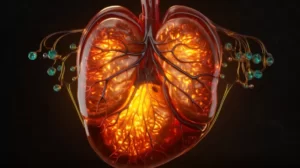Imagine eating a meal that has ingredients sourced from 53 different countries. Sounds incredible, right? Well, that’s precisely what happened when the Food Safety Authority of Ireland analyzed a dish of Chicken Kiev served at a Dublin restaurant. It’s no wonder that finding the source of food poisoning outbreaks has become increasingly challenging in a world where global distribution networks and large-scale food producers dominate.
Foodborne illnesses can lead to unnecessary deaths and significant economic losses. Delays in identifying the cause of an outbreak only make matters worse. So, how do we tackle the growing complexity of food supply chains, and can we develop a systematic approach to help unravel the root cause of food poisoning incidents?
The Complexity of Food Supply Chains
Modern food systems are strikingly complex, with products being shipped across the globe to satisfy consumer demands and meet market necessities. According to a study by the United Nations (U.N.), the food-transport network forms a convoluted web, with numerous transportation routes and vulnerable hotspots.
Using import and export data, researchers have observed that some regions are considered “high-risk” for foodborne illness outbreaks due to their extensive transportation operations. This complexity can make tracing the source of outbreaks exceedingly hard, with the potential for cross-contamination at multiple points along the supply chain.
The Need for Transparency and Rigorous Biotracing
Greater transparency about the origin of ingredients is essential for investigators to have any hope of identifying the sources of food poisoning outbreaks. To achieve this, researchers propose using a comprehensive, quantitative methodology for biotracing.
Biotracing is the process of following food products and their components from their point of origin to the end consumer. The goal is to determine the precise points at which contamination occurs and to help prevent future incidents. By adopting a rigorous approach to biotracing, we can potentially mitigate the risks associated with complex food supply chains.
In some cases, this may mean developing new technologies and methods to trace and verify the origin of food products. For instance, blockchain technology has been suggested as a potential solution to enhance traceability within the supply chain, thanks to its ability to record transactions securely and transparently. To learn more about how blockchain technology can improve food safety, visit this comprehensive article by the Food Safety News.
Empowering Consumers to Make Informed Choices
As consumers, we have a responsibility to play our part in ensuring the safety of the food we eat. One simple yet potent step we can take is to be more discerning about the products we buy. By choosing locally sourced or organic produce, we can potentially reduce our exposure to harmful contaminants and support sustainable farming practices. While it might not completely eliminate the risk of foodborne illness, it can certainly contribute to a safer, more transparent food system.
We should also be proactive in educating ourselves about food safety and hygiene practices at home. This includes properly washing fruits and vegetables, cooking meats thoroughly, and avoiding cross-contamination between raw and cooked foods.
The Role of Government and Food Safety Agencies
Governments and food safety agencies play a crucial part in safeguarding our food supply. Through the enforcement of rigorous health and safety practices and the regular inspection of food production facilities, they can help minimize the risk of foodborne illness outbreaks. In addition, enhancing the quality and accessibility of food safety information and consumer awareness campaigns can help the public make more informed choices about their diet and overall health.
Even with the best efforts of regulators, food producers, and consumers, the risk of foodborne illness outbreaks still lingers. As our world continues to globalize, the complexity of food supply chains will only increase, making the challenge of identifying poison sources even more difficult. The best approach to minimizing this risk lies in boosting transparency about food origins, improving biotracing methodologies, and fostering a culture of collaboration between producers, regulators, and consumers.
The health of our families and the global population depends on our ability to identify and mitigate food supply chain risks. Ensuring that we have access to safe, clean, and sustainable food sources is an essential aspect of maintaining a healthy and thriving society.



![8 Simple Rules to Refresh Your Body with a Healthy Cleanse [See Pictures]](https://naturalhealthreserve.com/wp-content/uploads/2024/01/8-rules-healthy-cleanse-slideshow-300x168.webp)